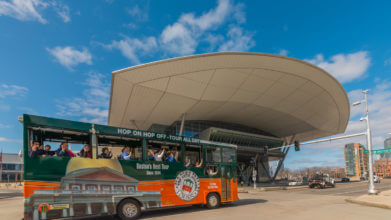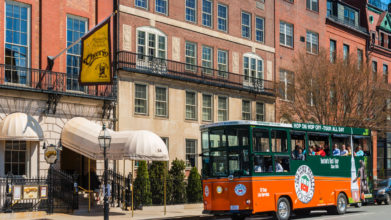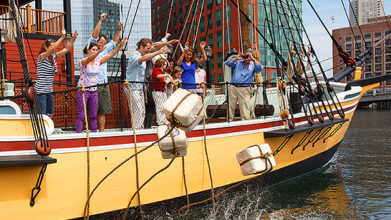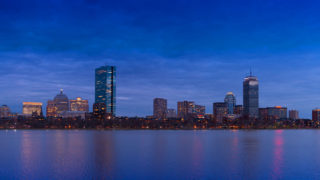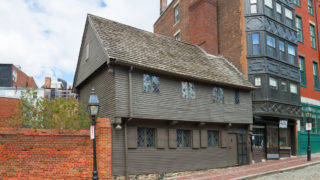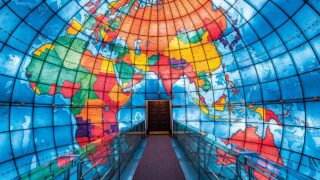Chinatown
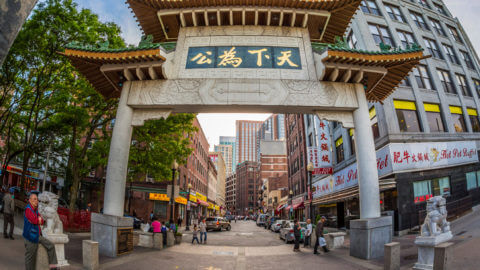
Chinatown in Boston is the only historic Chinatown in New England. The area first became populated by Chinese immigrants in the early 1890’s. Before that, the area was settled by White Anglo-Saxon Protestants. Irish, Jewish, Italian, and Syrian immigrants also all lived in the area at one time or another because of the low cost of housing and job opportunities in the area. In the late 19th century, manufacturing plants moved into the area and remained active through the 1990’s.
Today, Boston’s Chinatown is still a center of Asian-American life in New England. The many markets offer rows of fresh vegetables, and mounds of seafood or sweet-tasting delicacies. Try Chinese, Cambodian, Thai, Vietnamese, or Japanese restaurants, and pose for photos at the Chinatown Gate.
Ultimate Guide To Chinatown (Boston)
The only historic Asian enclave of its kind in New England, Boston’s Chinatown traces its history back to the late 19th century. The neighborhood, constructed on tidal flats that were filled in during the early 1800s, became the residential, commercial and cultural hub of the city’s Chinese community as well as other Asian immigrants. Today, the bustling neighborhood is filled with a dense mix of historic buildings and Asian-themed shops and restaurants. It is the third-largest Chinese neighborhood of its kind in the nation. The community’s boundaries are Surface Road as well as Essex, Kneeland and Tremont streets.
History of Chinatown
The city of Boston reclaimed tidal flats in the early 1800s to provide more space for residential housing. Initially settled by Anglo-Bostonians, the neighborhood became less desirable after the construction of rail lines. The area would be resettled by a succession of ethnic groups, including Irish, Jewish and Italian immigrants. Each group supplanted the previous inhabitants to take advantage of the job opportunities and affordable housing in the area. In 1870, Chinese workers were brought to the Boston area from San Francisco to help break a strike at the Sampson Shoe Factory. Four years later, many of these workers and their families moved to what became known as Ping On Alley and opened a number of laundries. The first Chinese restaurant, Hong Far Low, opened in 1875. During this period, a number of factories moved into the area and created Boston’s historic garment district that remained active until the 1990s.
As more laborers arrived in Boston before the turn of the century, they settled in the burgeoning Chinese community. Because of the Exclusion Act of 1882, the enclave consisted mainly of men. This changed in the 1930s, when the government allowed their wives and children to immigrate to the United States. After the Exclusion Act was overturned during World War II, the neighborhood boomed in the 1950s. Large sections of the neighborhood’s residential and commercial buildings were demolished in the 1960s and 1970s to make room for the elevated Central Artery and Massachusetts Turnpike. When these roadways were placed underground as part of the Big Dig transportation project, Chinatown regained much needed urban green spaces. The neighborhood is experiencing gentrification as it continues to be the epicenter of Asian-American life in New England.
Must See Exhibits
An elegant paifang gate marks the official entrance to Chinatown. Built in a traditional Chinese style, the archway spans Beach Street, the heart of the community, near the intersection with Surface Road. Two decorative imperial guardian foo dogs flank the archway. A gift of the Taiwanese government in 1982, the gate has two inscriptions. One is a Chinese proverb stating that a good person is loyal, honest and polite. The other inscription relays the sentiment that everything under the sun belongs to the people. Community murals and old advertisements still adorn the exterior walls of several buildings in the neighborhood.
Part of the Rose Kennedy Greenway, Chinatown Park features bamboo accents, unique water fountains and Chinese-inspired architectural details. The one-acre linear park also includes a variety of public artwork along with a section of pavement painted like a Chinese chessboard. The pattern represents heaven and earth in Chinese culture. A landscaped garden exhibits plants indigenous to Asia, such as cherry trees and chrysanthemums.
Located on Washington Street, the Hayden Building was constructed in 1875. The four-story brownstone, listed on the National Register of Historic Places, is Boston’s only remaining commercial building designed by the famed architect Henry Hobson Richardson who also designed the Trinity Church.
Popular cultural celebrations in the neighborhood include the Lantern and the August Moon festivals. The Lantern Festival takes place during the Chinese New Year. The festivities include street food and musical performances as well as fireworks and a parade. The neighborhood’s largest annual cultural celebration, the August Moon Festival also features food, music and entertainment. Vendors offer a wide variety of traditional Asian arts and crafts, food and other items. In addition to performances of Chinese opera, you can enjoy folk dancing, martial arts exhibitions and lion dancers from around the world.
Know Before You Go
Several “T” stops and the MBTA Silver line scheduled bus service provide convenient access to the neighborhood. In addition to the Chinatown station on the Orange subway line, you can use the Boylston station on the Green line and South Station on the Red line. South Station is also an intermodal hub for Amtrak as well as regional commuter train and bus services. Entrance and exit ramps for Interstate 93 are located near the neighborhood’s southern boundary. The densely packed nature of the neighborhood makes on-street parking very limited.
Nearby Attractions
The Theater District is home to more than a dozen major performing arts venues. Patrons enjoy a variety of Broadway and off-Broadway theatrical productions, including dramas and musicals. The neighborhood also contains dance and comedy clubs along with the Wang Center for the Performing Arts, the historic Opera House and St. Paul’s Cathedral.
The former Leather District, centered on Kneeland Street and Dewey Square, is home to 19th-century brick warehouses and factories that feature eye-catching architectural details like large glass storefronts and cast iron columns.
Once the setting for the colonial-era garrison that protected the city, Fort Point is a revitalized waterfront neighborhood. Providing many exterior scenes for the movie “The Departed,” Fort Point is a haven for artists, galleries and restaurants. The neighborhood is home to the Institute of Contemporary Art and Boston Children’s Museum.
Boston Ghost Tour
Old Town Trolley Tours invites you to explore Boston’s darker side aboard the city’s only “frightseeing” ghost tour, Ghosts & Gravestones. You’ll visit the streets where the Boston Strangler once prowled and hear local tales of murder and mayhem, ghosts and ghouls.
Boston Old Town Trolley Tour
Old Town Trolley is a convenient way to explore Chinatown while maximizing your vacation time. The Asian-American experience is in full bloom here with with a plethora of shops and restaurants to choose from that represents a wide variety of Asian cultures. Find the lowest price and money-saving packages by purchasing tickets direct through our website
Frequently Asked Questions
What is the significance of Boston’s Chinatown?
Boston’s Chinatown holds a special place in the city’s cultural and historical tapestry, representing one of the oldest surviving Chinatowns in the United States. Established in the late 19th century by Chinese immigrants, it has evolved into a vibrant hub of Chinese-American life, offering an authentic glimpse into Chinese culture, cuisine, and community in the heart of Boston. Chinatown is not just a neighborhood; it’s a cultural experience, featuring traditional bakeries, teahouses, specialty shops, and some of the best Chinese restaurants in the city. Beyond its culinary appeal, Chinatown hosts various festivals and cultural events throughout the year, including the popular Chinese New Year celebration, which fills the streets with color, music, and dance. This neighborhood not only serves as a center for Chinese-Americans to connect with their heritage but also invites visitors and locals alike to explore and appreciate the richness of Chinese culture.
When did Chinese immigrants move to Boston’s Chinatown?
Chinese immigrants began settling in Boston’s Chinatown in the late 19th century, around the 1870s. Initially drawn by the demand for laborers, these early immigrants played a significant role in the development and character of the neighborhood, laying the groundwork for what would become a flourishing Chinese-American community.
What are some things to do in Boston’s Chinatown?
Exploring Boston’s Chinatown offers a variety of activities that cater to both cultural enthusiasts and foodies alike. Visitors can start their adventure with a culinary tour, tasting iconic dishes like dim sum, Peking duck, and bubble tea from local eateries. For those interested in cultural experiences, attending one of the many festivals, such as the Chinese New Year celebration or the Mid-Autumn Festival, provides a colorful glimpse into Chinese traditions and festivities. Strolling through the streets, you’ll find traditional bakeries and teahouses, along with specialty shops selling everything from Chinese herbs to handcrafted items, perfect for those looking to take a piece of Chinese culture home. Don’t miss the opportunity to visit the Chinatown Gate, a symbol of the neighborhood’s rich history and cultural significance. Additionally, engaging with the community by participating in a walking tour can enrich your knowledge of the area’s history and evolution. Chinatown’s vibrant atmosphere and unique offerings make it a must-visit destination for anyone looking to immerse themselves in the diverse cultural tapestry of Boston.

